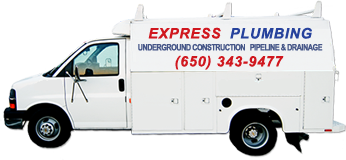
Why is My Water Bill Too High?
Are you trying hard to find the actual cause of an ordinary plumbing problem at home? Does excessive water usage, low water pressure, noises or slow drains ring a bell? If you are looking to find the source of the water problem at your place then you have landed on the right page. Follow a few simple tips to locate the source of the water problem:
Listen To The Dripping Sounds
This step may sound simple but it is often overlooked in a noisy, busy home. Although a dripping faucet would not waste a significant amount of water, over time it could result in gallons of water waste. You may hear the sound of dripping water where there is no or little activity around the house, such as late at night or early in the morning.
Look For The Leak Evidence
You can detect leaks along the board base of the walls near your plumbing fixtures. Pipes containing pressured water can eventually become corroded, crack or develop loose fittings due to freezing and thus, allowing the continuous loss of precious water until it is repaired. Darkened surfaces, mildew or puddles of water even may occur below the leaks. It may be important to remove the wallboard, plaster or paneling to correct the problem if it is inside the wall cavity.
Check Under The Sinks & Vanities
You can take a flashlight and follow the trail of the exposed pipes to look for the droplets of water. The droplets of water, if any, would accumulate at the lower section. You can run your fingers along these pipes and feel for wetness.
Look For The Sweat On Your Pipes
The pipes in your home may sweat when the water (cold) passes through them in the warmer interior spaces. This condensing of water on the surface of the pipes may start to drip, causing the moisture problems to eventually appear.
Maybe The Bathrooms Are Making Noises
Listen for noises from your bathrooms in order to check if they run at unusual intervals, especially when no one in the home has flushed them recently. The tank would slowly drain after some time when there is a seal leak in your water closet (toilet), until the level of water sufficiently drops for a float valve to replenish it. Leaking seals and sticking flush valves in the toilets could waste a significant amount of water since the flow is continuous.
Check Supply Valves On Commodes & Lavatories
The packing that seals the water valve basically seals when it is compressed. It is only sealed to pack the leak paths so it does not create any difficulty while you turn the handle. You need to turn the packing nut slightly clockwise to see if it stops the leakage around the stem. The smallest of leaks occasionally stops when the valve is partly opened and it is either fully opened or fully closed.
Last but not least, you need to check the water meter. The water flow to your house will cease by turning off all the appliances and faucets that consume water. Locate the water meter, read the displayed amount and note it. Check it again after an hour to see if the water went through it (even if no one is using it in your home). Usually, smaller leaks do not move this meter but larger ones will.
This residential plumbing information is brought to you by our Bay Area plumbers, voted contractor of the year. Express Plumbing is a division of Engineering Perfect Systems, dedicated to the Bay Area for multiple decades.
Contact us with any questions or upcoming plumbing projects in the Bay Area.











